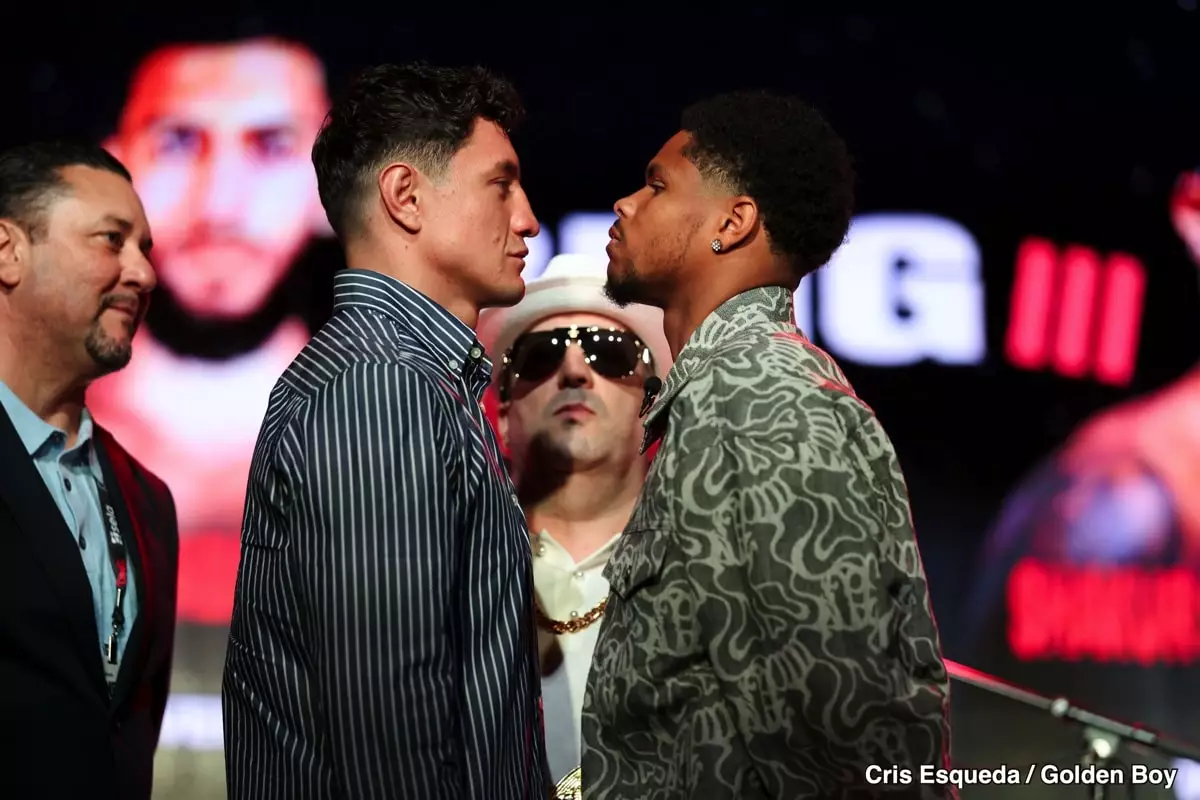Shakur Stevenson stands on the precipice of a pivotal moment in his career, facing William Zepeda in a bout that promises to reveal much about his true fighting identity. Critics and fans alike are eager to see whether Stevenson can adapt, fight with the fire expected in a New York arena, or revert to his cautious, tactical style that often frustrates audiences. This fight is more than just a matchup; it’s a litmus test for Stevenson’s evolution, resilience, and ability to meet the demands of the sport’s hard-nosed reality.
Despite Stevenson’s undefeated record and undeniable skill, there’s a perception that his approach can sometimes be too risk-averse. His reliance on speed, movement, and strategic counterpunching has served him well but may not be enough against a determined pressure fighter like Zepeda. The issue is not merely about winning but about delivering a performance that satisfies the paying crowd and cements his reputation. Fans in New York, renowned for their affinity for action-packed fights, will expect their money’s worth, and Stevenson’s potential to deliver an engaging bout could define his next chapter.
The Ring Size and Its Impact: Tactical Considerations and Player Dynamics
One of the most discussed variables leading into this fight is the size of the ring. Rumors about shrinking the ring surface have stirred debate, but the implications are profound. A smaller ring naturally favors pressure fighters like Zepeda, who excels at cutting off the ring and trapping opponents. For Stevenson, a boxer who thrives on space — darting in and out, utilizing his speed and movement — a compact environment could become a tactical nightmare.
However, the true challenge lies in whether Stevenson can adapt his style under these conditions. As Tim Bradley astutely points out, Stevenson’s ability to “pepper” Zepeda, to keep him on the back foot, depends heavily on the resilience of his hands and his ability to fight with a degree of aggression. If Stevenson’s fragile hands falter once more, as they did in his recent bout against Josh Padley, his game plan may unravel, turning a tactical chess match into a physical grind.
Furthermore, Zepeda has shown a penchant for cutting off the ring effectively, even against opponents who aren’t natural movers. His relentless pressure and stamina could negate Stevenson’s preferred space-and-move style, forcing Stevenson into a more defensive, possibly less exciting, comeback effort. The ring size, therefore, becomes an unintended character in this fight — a test of adaptability and grit.
The Audience Demands and the Fight’s Context
A crucial element often overlooked in discussions about boxing is the cultural and emotional environment of the venue. New York’s boxing fans have historically been unforgiving to fighters who shy away from in-fight action. This fight, scheduled at Louis Armstrong Stadium, is expected to ignite the passionate, no-nonsense attitude of the local fight crowd.
While Stevenson has built a reputation as a technically gifted tactician, his tendency to hold, step back, and avoid exchanges can earn him boos and criticism from fans who seek raw, thrilling combat. This puts Stevenson in a difficult position: should he stick to his comfort zone or aggressively seek to engage? The latter might risk vulnerability but could also lead to a memorable performance appreciated by the crowd and respected in retrospect.
The political and promotional landscape adds another layer of complexity. Stevenson is being carefully managed to stay unbeaten until a massive showdown with Gervonta Davis, which fans and analysts see as a career-defining moment. As such, recent fights have been tailored to avoid headline-grabbing hazards, leading to accusations of “playing it safe.” The upcoming bout against Zepeda could be the perfect storm—demanding more engagement, testing his durability, and revealing whether Stevenson can shed the cautious label to become a genuine star.
Risks, Rewards, and the Path Forward
Ultimately, Stevenson’s success in this fight hinges on his willingness to embrace risk — to stand toe-to-toe, to throw punches in volume, and to demonstrate endurance under pressure. Critics like Tim Bradley argue that he’s relying too much on movement and evasive tactics, which may not be enough in a fight that could turn physical and gritty. If he’s unable to withstand Zepeda’s relentless assault or his own fragile hands give out, Stevenson risks falling short of public expectations and damaging his momentum.
This bout also underscores an essential truth about modern boxing: style alone isn’t enough. Fighters must blend technique with toughness and be adaptable under fire. Stevenson’s potential to evolve into that kind of competitor depends on his willingness to challenge his comfort zone, especially when the stakes are high. A bold, aggressive approach may invite criticism and vulnerability, but it could also elevate him to legendary status if executed correctly.
As fans, analysts, and lovers of the sport, we are watching not just to see who wins but to understand whether Stevenson can mature into a fighter capable of sustained, thrilling action. Success in this fight might be less about the outcome and more about proving that he can rise to the occasion, adapt his style under pressure, and satisfy the insatiable hunger of his audience. Anything less than that might leave fans feeling shortchanged and could stall his trajectory towards superstardom.

